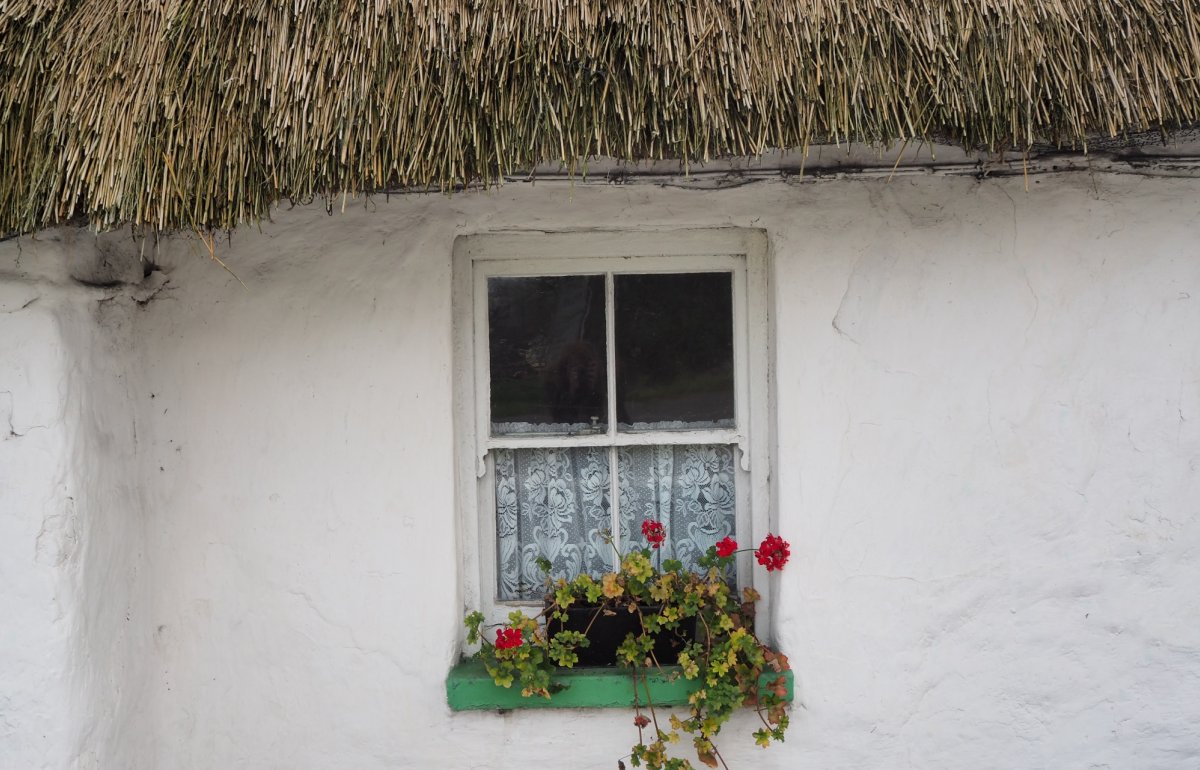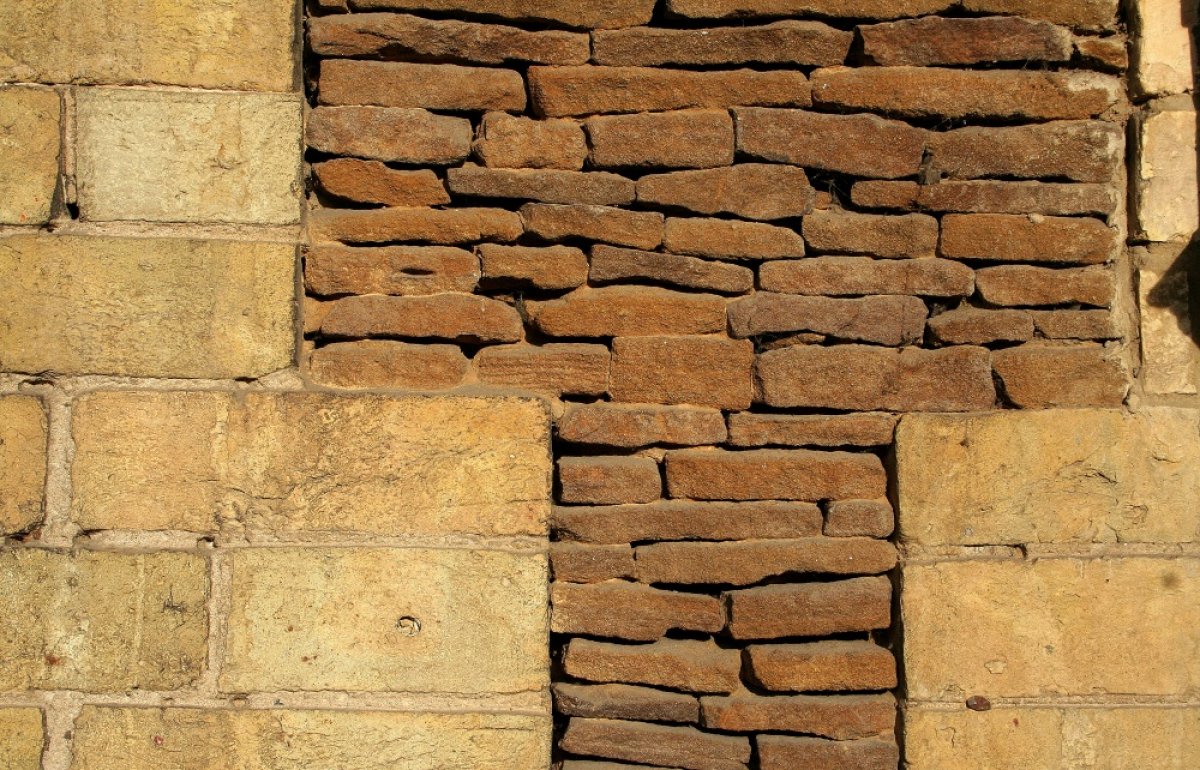Using lasers to clean alabaster
Share on:
Recently, the 12th-century alabaster arch to St Mary’s, Tutbury, Staffordshire was cleaned. This church has a monumental west doorway, built in the mid-12th century and richly carved with Romanesque ornament. The doorway comprises six orders or receding arches. The innermost order is formed of thirty blocks of locally-mined alabaster. Each carved with three beak-heads and a human or animal figure. Interestingly, it is the only instance of alabaster used in an exterior arch in the country.
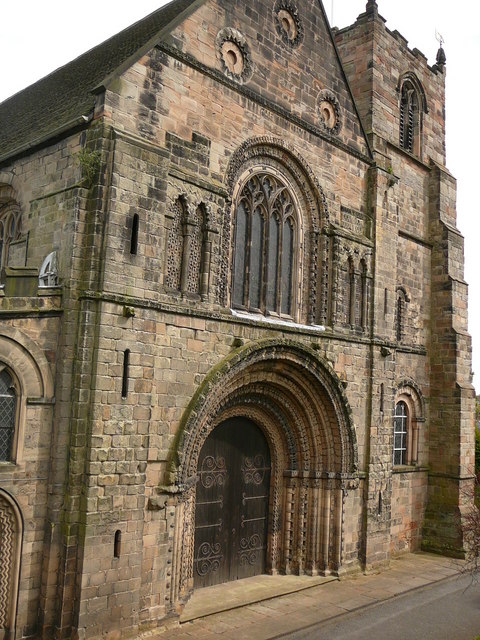
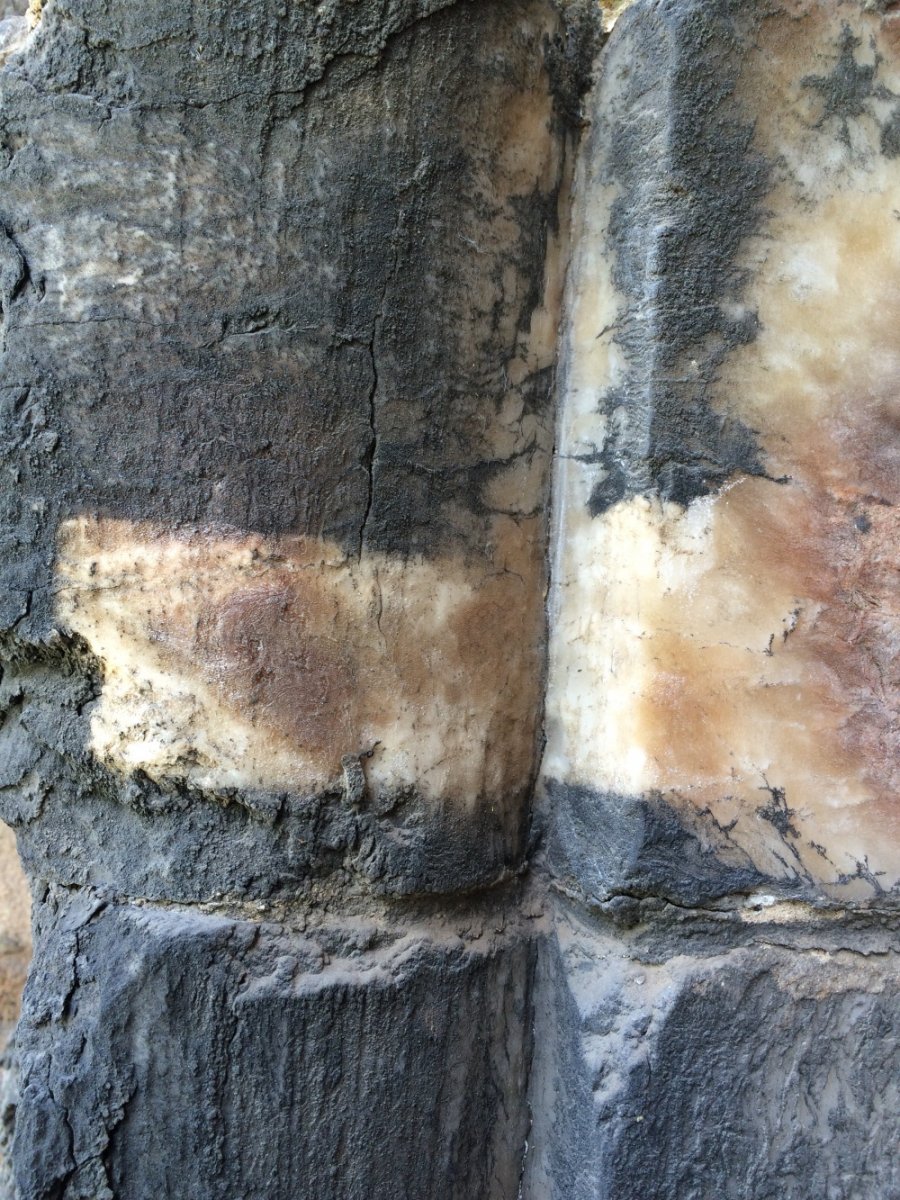
Credit: Colin Park CC BY-SA 2.0 and Rachel Morley
Alabaster is the fine-grained form of the mineral gypsum (calcium sulphate). It is water soluble, extremely brittle, easily damaged and readily dissolved in acidic solutions such as rainwater. Given the great age and exposed position of this soft material, it is extremely well preserved. However, a thick black encrustation coated the carving. This layer is formed when microscopic blade-like gypsum crystals lock carbon deposits and airborne pollutants in place. Dirt particles become embedded in the surface and can be difficult to remove. Furthermore, as the alabaster arch is exposed, reaction with moisture can lead to the formation of re-precipitated gypsum crusts on the surface; these are usually harder and denser than the underlying alabaster.
So, not only are these accretions unsightly, but they risk harming the delicate alabaster surface and degrading the underlying core material.
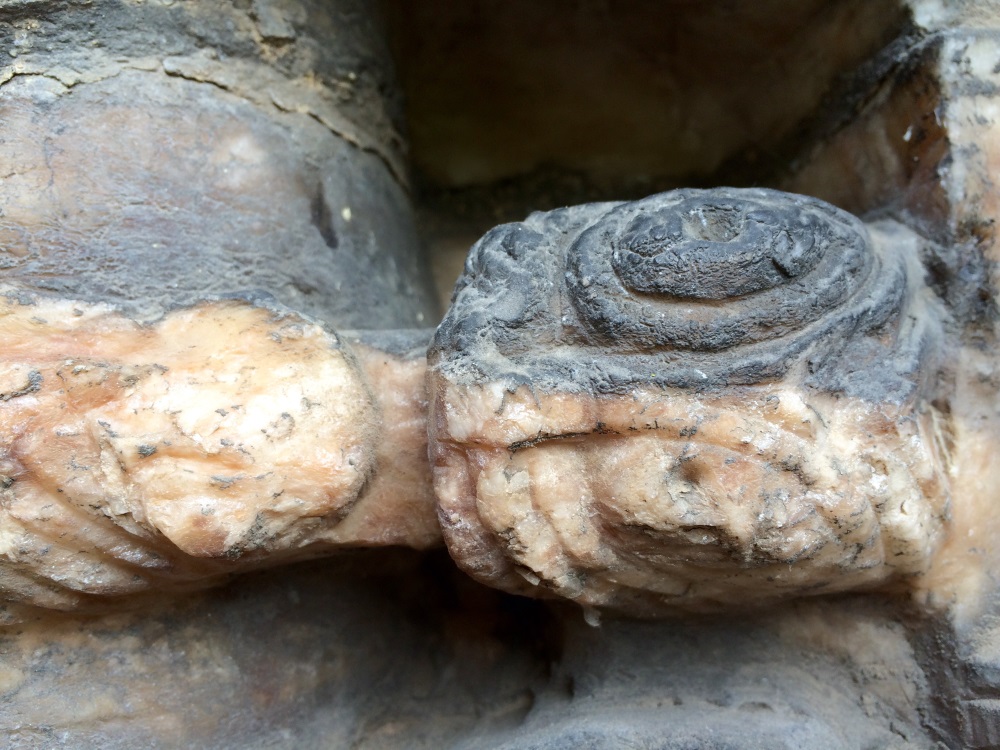
Credit: Rachel Morley
Considering the properties and condition of the alabaster, after various cleaning trials, laser-cleaning was the most sensible approach. It eliminates the need for prolonged exposure to moisture and detergents and indeed any contact with the friable areas.
So how does laser cleaning work? In short, an infra-red (in this case) laser beam is absorbed by the dark dirt deposits, this burst of heat causes the particles to expand and detach from the surface. As the process offers unrivalled control, the process can be stopped before the surface of the carving is reached.
With thanks to Rachel Morley.
Sign up for our email newsletter
Get involved


